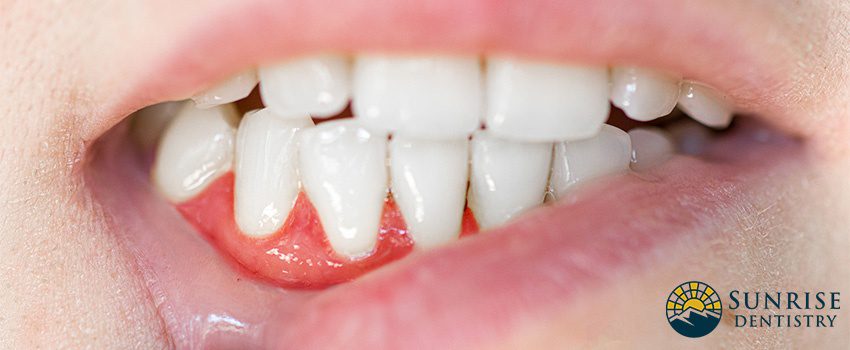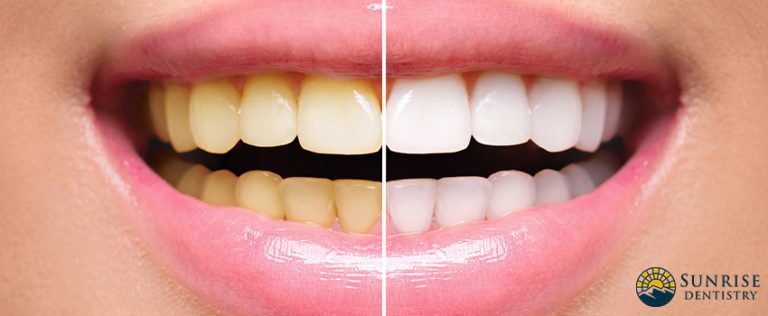Receding gums is the condition when the margin of the gum tissue that covers your teeth starts to wear out and pull back, exposing the root of the teeth in the process. When this happens, gaps between the teeth will begin to form, causing infectious bacteria to develop. When left untreated, gum recession can cause the bone structure of your teeth to weaken, which could result in tooth loss.
A receding gum line is a common dental problem. Some people don’t even realize they have the condition. If you think you are experiencing a gum recession, the first thing you need to look out for is tooth sensitivity. Receding gums is a condition you don’t want to ignore because it can lead to worse dental issues. That’s why it is important to know its causes and how to stop receding gums.
What Causes Receding Gums?
There are some factors that may cause receding gums, such as:
- Periodontal Disease – Gum diseases are the most common cause of gum recession. Periodontal disease is a dental issue that usually results from infections and/or inflammation in the gum line. It can destroy the gum tissue and bone supporting your teeth and keeping them in place.
- Genes – Studies show that about 30% of people may develop gum diseases in their lifetime. Regardless of how well you take care of your teeth, if you are prone to gum diseases, there is a big chance for your gums to recede.
- Poor dental care – If you don’t give enough attention to your dental health, you will soon find yourself with a lot of dental issues such as plaque and cavity buildup, which may lead to gum recession.
- Grinding your teeth – Grinding or clenching your teeth can put too much force on the teeth and cause the gums to recede.
Receding Gums Treatment
If you are experiencing a gum recession, you may have asked yourself, “Do gums grow back?” The truth is, when your gums have receded, they will not grow back. However, there are some treatments that can restore the gum tissue that surrounds the teeth.
The early stages of gum recession can still be treated through deep cleaning and root planing. This process includes the removal of plaque and tartar buildup below the gum line. When the root area is exposed, it will then be smoothened out to make it more difficult for bacteria to attach to the teeth and gums.
If your condition cannot be treated with deep cleaning, gum surgery might be the best option.
Types of Surgery to Treat Gum Recession
Once the gums have receded, they cannot grow back. However, some treatments can reattach and restore gum tissue around the teeth. To avoid gum recession, it is important that you maintain good oral hygiene and visit your dentist regularly.
1. Tooth Scaling and Root Planing
Tooth scaling and root planing is the process of folding back the affected tissues of the gum to remove harmful bacteria in the deep pockets of the gum line. After removing the bacteria, the gum tissue will be put back in its place surrounding the tooth, effectively reducing its size.
2. Regeneration
Receding gums may sometimes cause the bones supporting your teeth to be destroyed. When this happens, regeneration is the most recommended procedure. After reducing the depth of the gum pocket, a regenerative material like graft tissue will be applied to the area to encourage bone and tissue regeneration.
3. Soft Tissue Graft
This procedure involves cutting a flap from the roof of your mouth. A tissue from that flap of skin called subepithelial is removed and stitched to the gum tissue that encloses the exposed root. This will keep the root of your teeth covered and protected from bacteria buildup and infection.
It is best to ask your dentist for the advised procedure based on your specific needs.
How To Prevent Gum Recession
The best way to prevent gum recession and other dental issues is to take care of your oral health and practice daily habits to keep your mouth clean and free from any infection. Brushing and flossing, as well as regular dental checkups, are very important. If you experience gum recession, it is best to set more frequent appointments with your dentist to make sure that your teeth and gums are well taken cared of.
Always remember to use a soft-bristled toothbrush. If you have a problem with teeth grinding, you can ask your dentist for a way to fix the issue before it turns into a more serious dental condition.
Here are other ways to prevent receding gums:
- Quit smoking.
- Maintain a healthy and balanced diet.
- Be mindful of all the changes that occur in your mouth, teeth, and gums.
If you are looking for the best dentist in Durango, CO, to treat your receding gums, Sunrise Dentistry is here to make sure that your teeth and gums are healthy and in good condition all year long. Visit our website to learn more about our services and contact us now!





